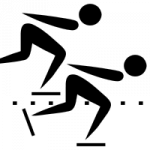
I met with a bunch of professors and fellow alums in a focus group last week, and we discussed things we liked about the grad program in Library Science at Queens College, and things that needed might need some tweaking. We went around the circle a couple times, and on the third go around, I said the courses I liked best were those which were non-hierarchical, and emphasized openness and sharing, where the professor wasn’t the sole content provider, and didn’t treat students like open vessels which needed to be filled, and students didn’t feel like they were just cycling through the system, but were contributors in the learning process.
All this I stole from reading Luke Waltzer’s great post “On EdTech and the Digital Humanities.” Luke’s ideas had been simmering in my head for days, and they finally found an outlet.
Reactions, while friendly and supportive, were cautionary. Yes, but there is an incredible volume of information that needs to be transferred to the students. Yes, but the curriculum has been carefully constructed to provide information necessary for librarianship. Yes, but there is an incredible diversity in our student population.
All of which I agree with, to a point.
When you’re in library school, you have to take four, traditionally structured core courses: fundamentals, technology, cataloging, and reference. After that, depending on your specialization, you may have other requirements to meet or be lucky enough to choose your own electives. I found courses which focused on distance learning, digital collections, new technologies, open paradigms, and the value of wikis, blogs, and social media. And it wasn’t coincidental that these courses valued member participation, and encouraged students to create shareable resources and e-portfolios to document their work.
Anya Kamenetz writes in her book, DIY U: Edupunks, Edupreneurs, and the Coming Transformation of Higher Education, that technology can provide “speed skates” for teachers and students. But educational technology, she warns, needs to be “well-designed and carefully implemented” (p. 103). Putting gadgets in students’ hands doesn’t necessarily make them great students.
Cathy Davidson, director of HASTAC, responded to a NY Times article Math that Moves: Schools Embracing the iPad, sharing her mixed reactions to providing iPads to students. Yes, iPads are great, and yes, some students will have incredible experiences playing around with them, but if a school’s curriculum doesn’t change, those iPads’ potential will never be fully realized.
Gardner Campbell Educause article “A Personal CyberInfrastructure” proposes to give students a personal web domain as freshmen, and let them build upon it as they progress through their education. This makes perfect sense for students in library science, where technology plays such an important role, and where a large amount of information is thrown at you, and archiving it can become overwhelming.
In the old days, newly-minted librarians used to leave library school with a deck of reference cards that they painstakingly collected. They used these cards to guide them in their new jobs, adding relevant cards to their personal stacks as their careers progressed. Can we re-design a curriculum that perpetuates this need to collect, so that students leave the program with a portfolio that helps them land jobs, and likewise guide their futures? Can we re-structure course work so that students learn from each other, in the open, and not just from the sage on the stage?
There’s been a lot written about the difference between consuming technology and producing it. I came across a cool article by Jeffrey MCClurken called “Learning through Digital Media: Teaching and Learning with Omeka: Discomfort, Play and Creating Public Online, Digital Collections,” which questions the common notion that digital natives somehow intuitively get digital media. Their “digital abilities tend to be fairly narrowly-focused (Facebook, texting, and the first page of Google Search results)” and “their involvement with digital media tends to be consumptive rather than productive.” The notion of the digital native “risks letting teachers off the hook from teaching with digital media,” simply because their students already know it, maybe even better than they do.
First year library students quickly become connoisseurs of digital media, and many become effective producers, using technology to propel themselves through the program. But are the “speed skates” laced on too late? One suggestion from another alum in last week’s focus group was to run some kind of technology “prep” course for those entering the program. Besides addressing the diversity in students’ digital literacy, this course could introduce some basic social media tools that will be employed in future course work.
It’s hard to get to know your peers in grad school, and I regret I didn’t learn more from this group of extraordinarily bright, interesting, and diverse future librarians. One way the program can do a better job fostering a community is by using tools like WordPress, where students reflect upon their coursework, post their papers and projects, and comment on each other’s work.
The idea of student e-portfolios is being actively investigated. Can we take it one step further? Can we integrate the concepts of e-portfolios with the program’s pedagogy and realize technology’s potential to propel open learning?






